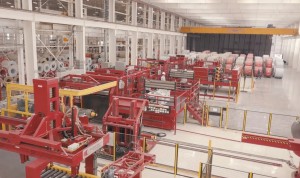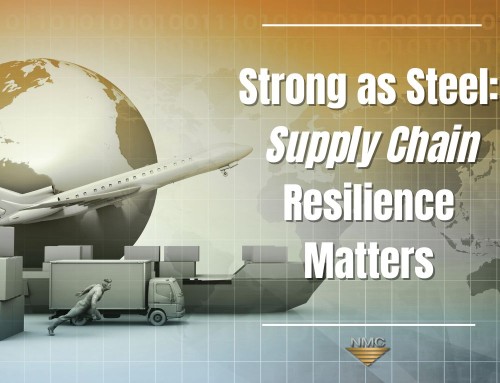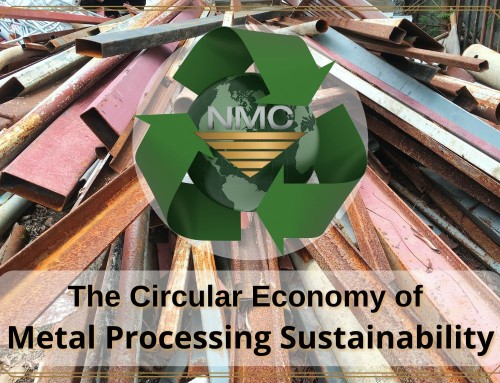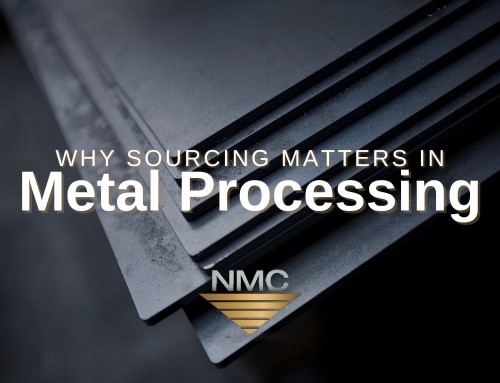Today, the currently operating U.S steel industry includes approximately 100 steel supply and steel production facilities, employing 140,000 people, directly or indirectly supporting the livelihood of almost 1 million Americans. AHSS (Advanced high-strength steel) is the only material that reduces greenhouse gas emissions in all phases of an automobile’s life: manufacturing, driving, and end-of-life. Being the most recycled material in the world, more than aluminum, copper, paper, glass, and plastic combined, over 60 million tons of steel are recycled or exported for recycling each year in North America alone.
The Rise of The American Steel Industry
Early colonists had 2 primary goals: shelter and food. They needed to build homes, plant crops, and hunt. In order to facilitate these tasks, iron tools were needed. Things like hammers, knives, saws, axes, nails, hoes, bullets, and horseshoes. Iron products were in demand, but it wasn’t until the 19th century, when technological advances drove down the cost and increased the quality of the product, that steel manufacturing became a dominant industry. “With the abundant iron ore deposits around Lake Superior, the rich coal veins of Pennsylvania, and the easy access to cheap water transportation routes on the Great Lakes, the Midwest became the center of American heavy industry,” business and financial historian John Steele Gordon writes in his Importance of Steel exposition. “In the years after the Civil War, the American steel industry grew with astonishing speed as the nation’s economy expanded to become the largest in the world. Between 1880 and the turn of the century, American steel production increased from 1.25 million tons to more than 10 million tons. By 1910, America was producing more than 24 million tons, by far the greatest of any country.”
Strong technological foundation was the primary driving force behind the tremendous growth in the steel industry. Steel supply was crucial for rapid expansion of cities and urban infrastructure. Railroads, bridges, factories, buildings, and eventually, in the 20th century, steel was used to make household appliances and automobiles. It was at this time that the US steel industry began using the open-hearth furnace, then, the basic oxygen steelmaking process.
Long after World War II, the American steel service industry continued to flourish and serve as the foundation of the national economy. In 1969, American steel production peaked when the country produced 141,262 ,000 tons. Since then, large steel mills have been replaced by smaller mini-mills and specialty mills, using iron and steel scrap as feedstock, rather than iron ore.
American Steel Service and Industry Today
Although we’ve entered the computer age, American steel remains a top competitor in the global marketplace. The United States is the world’s largest steel importer, according to the American Iron and Steel Institute, labor productivity has seen a five-fold increase since the early 1980s, going from an average of 10.1 man-hours per finished ton to an average of 1.9 man-hours per finished ton of steel in 2015. In addition, the North American steel industry is committed to the highest safety and health standards. Since 2005, U.S. steel producers have achieved a 70 percent reduction in both the total OSHA recordable injury and illness and lost workday case rates. Current U.S. steel production trends can be seen here: https://tradingeconomics.com/united-states/steel-production
Advanced High-Strength Steel
The evolution of advanced high-strength steels (AHSS) continues to grow in application, notably in the automotive industry. New advanced steel grades are the lightweight automotive material that best addresses society’s need for reduced greenhouse gas emissions, without compromising safety, performance, or affordability. These new steel types are already being used to improve the performance of vehicles on the road and emerging grades will be increasingly employed. Each year, new car models are introduced using lighter-weight, higher-strength steel components that provide a cost-effective answer to the demand for increased safety and fuel economy. Studies show that AHSS steel grades are growing faster in new automotive applications than aluminum and plastic—steel’s main competitors.
About National Material L.P. – With more than 3,000 employees from a multinational portfolio of companies, NMLP provides engineered metal products, which include aluminum extrusion and stainless steel rolled product companies, to automotive, aerospace, construction, defense, electrical, and industrial markets.
Visit National Material: https://www.nationalmaterial.com or call (U.S.) 847-806-7200, Diana Pulido
(SOURCES: American Iron and Steel Institute, Steel Market Development Institute, John Steele Gordon)









